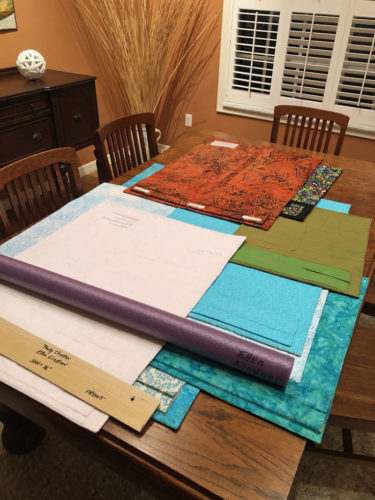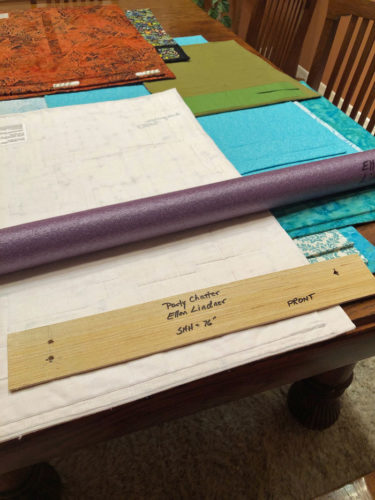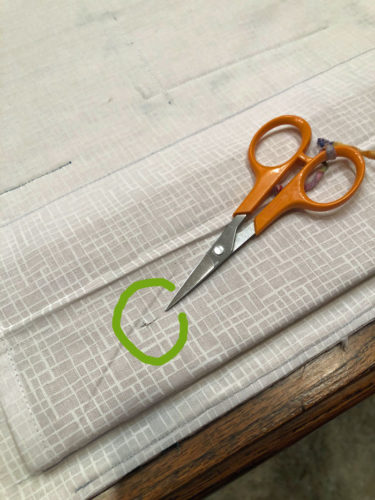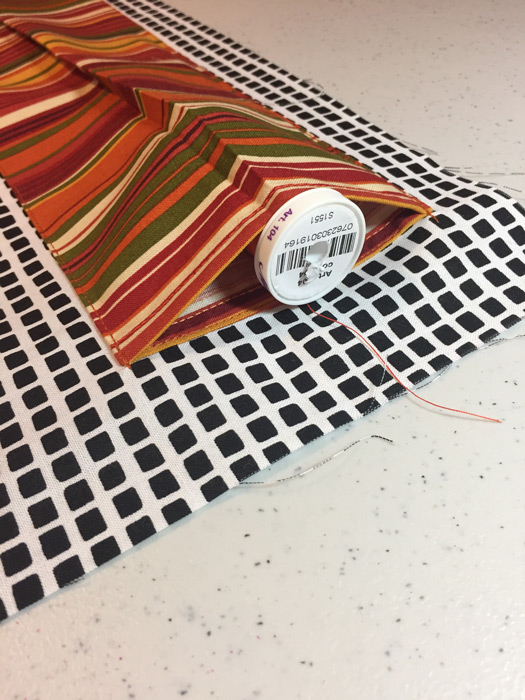After making a hanging sleeve for your quilt it’s time to make the slat that will go in it.
The slat should be made from lightweight but sturdy wood. My husband cuts strips of luan door skin for me. I can then cut them to length with a utility knife. You can also look for wood trim and have the hardware store cut it to length of you.
What length, you ask? It should match the length of the sleeve. (In the following photos, the striped fabric is the hanging sleeve and the black and white fabric is the faced backing.)
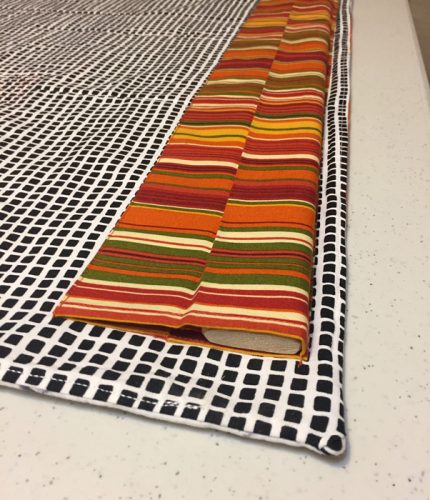
This slat is much heftier than I usually use – just because it’s what I had on hand.
Drill hanging holes, about 1/4″ wide about 2″ from each end. The holes should be in the top half of the slat. In the photo below, the slat has been pulled out temporarily to show the holes.
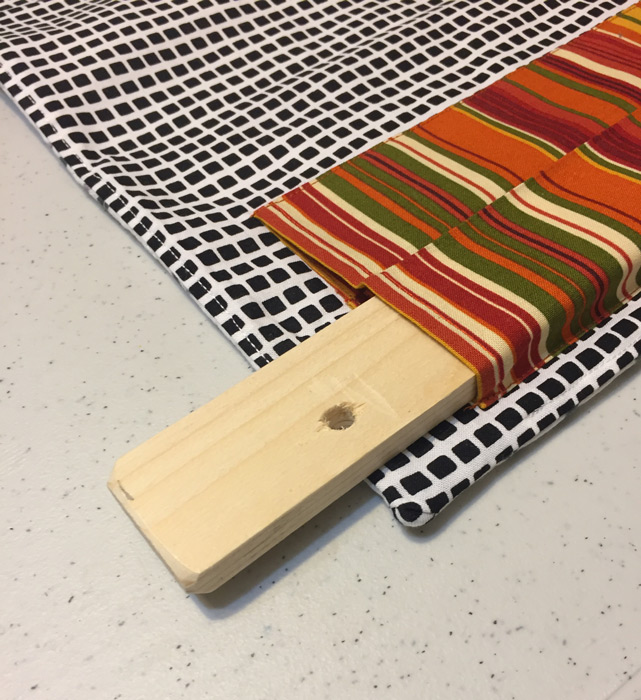
This slat is much heftier than I usually use – just because it’s what I had on hand.
Insert the slat into the sleeve and center it, left to right. Then, scoot it up as high as it can go toward the top of the sleeve. (Gravity will cause this shift when hanging.) Feel around, through the sleeve, to find the drilled holes. Using sharp embroidery scissors, cut a small X in each location. These allow the hanging nails to reach from the front of the slat, through the sleeve, to the wall. Use nails with a head to them, to allow them to catch the slat more easily.
This photo shows how it will all work. The head of the protruding nail is inside the sleeve, reaching through the slat hole, and the sleeve hole.
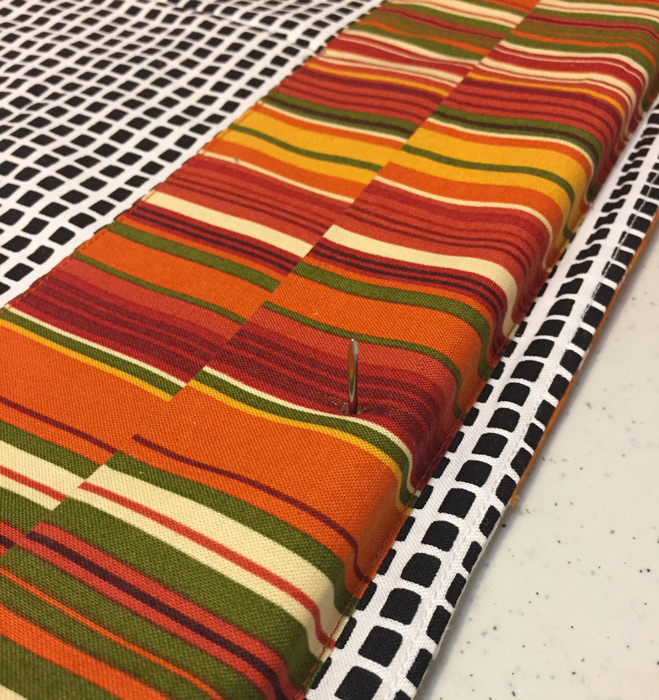
Now you’re ready to hammer two nails into the wall to support the quilt and the slat.
– Insert the slat in the sleeve. Determine the desired location and mark this on the wall.
– Remove the quilt and work with just the slat. Position it in the desired location, check that it’s level, and mark the nail holes on the wall.
– Hammer nails into these two positions, leaving the nails protruding about ¼”.
– Reinsert the slat into the sleeve.
– You’ll probably need a helper for the actual hanging part. The idea is to lift the quilt onto the two nails, but you won’t be able to see them as you’re doing it. I find the hole and put my thumb over it in the front, while I hold the slat and quilt aligned with my other fingers on the back. IF the nails stay in place, you can just lift and set the slat/quilt combo on to the nails.
– However, the nails frequently slide into the wall. In that case, pull them out of the wall and put them into the slat in the correct orientation, now holding quilt, slat, and nail as you hunt for the hole in the wall. It’s generally not difficult but slightly awkward and definitely a 2 person job. Voila!
These quilts were hung using slats like those described.
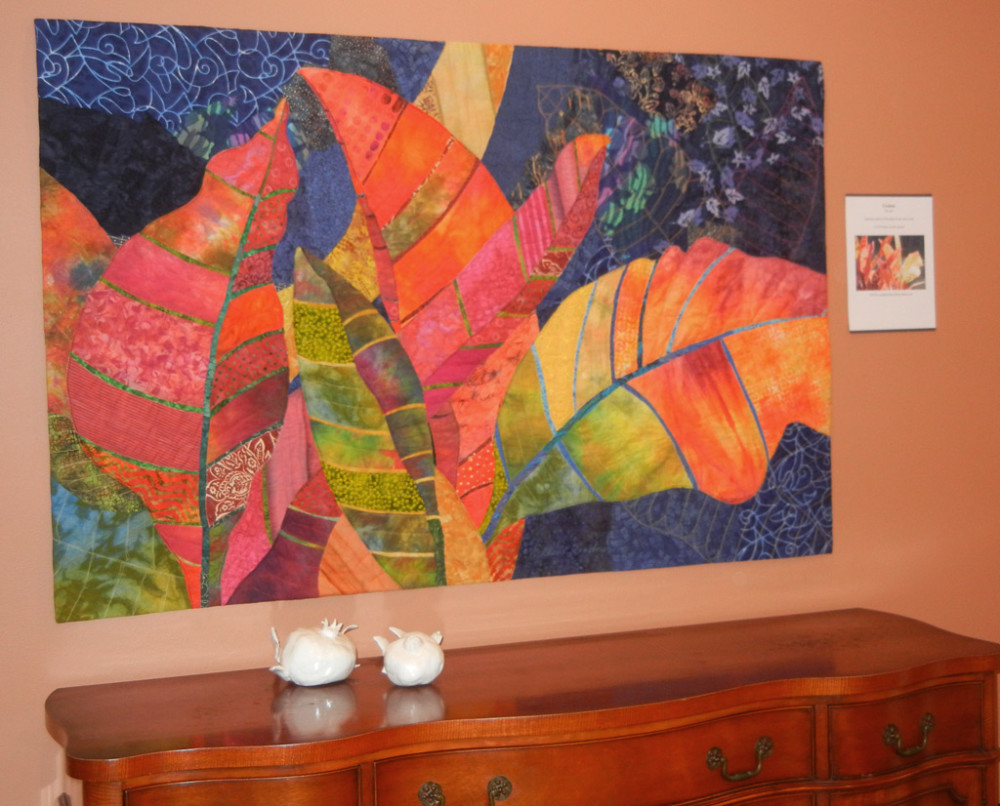
“Crotons,” displayed in my home
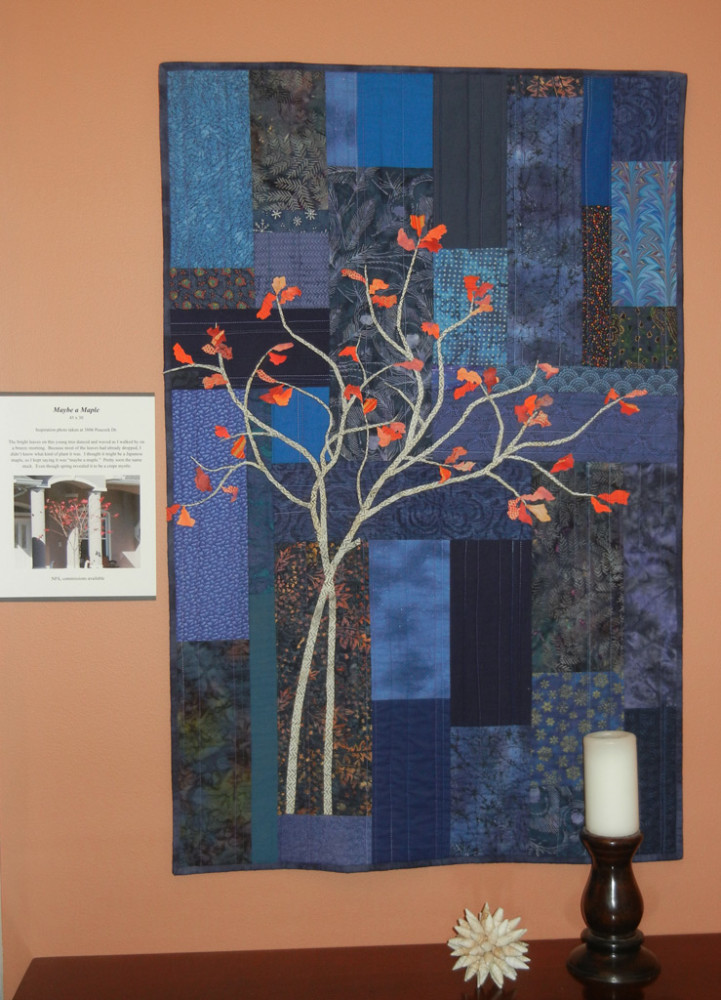
“Maybe a Maple,” displayed in my home
See how flat they are? Just like hanging a stiff piece of art.
And, if you do use a dowel, the excess sleeve fullness still allows it to hang pretty flat, like the one below.

I’d love to see installation photos after you get your quilt up!
Ellen Lindner
P.S. There’s a much easier version which works well for small quilts.
– Make the sleeve a couple of inches shorter, so the slat will protrude out both ends. This allows you to fold the quilt back and SEE the slat holes when hanging.
– The only down side is that the far left and right edges of the quilt are not supported by a slat. For heavier/larger quilts some sagging may be visible, especially over time.




